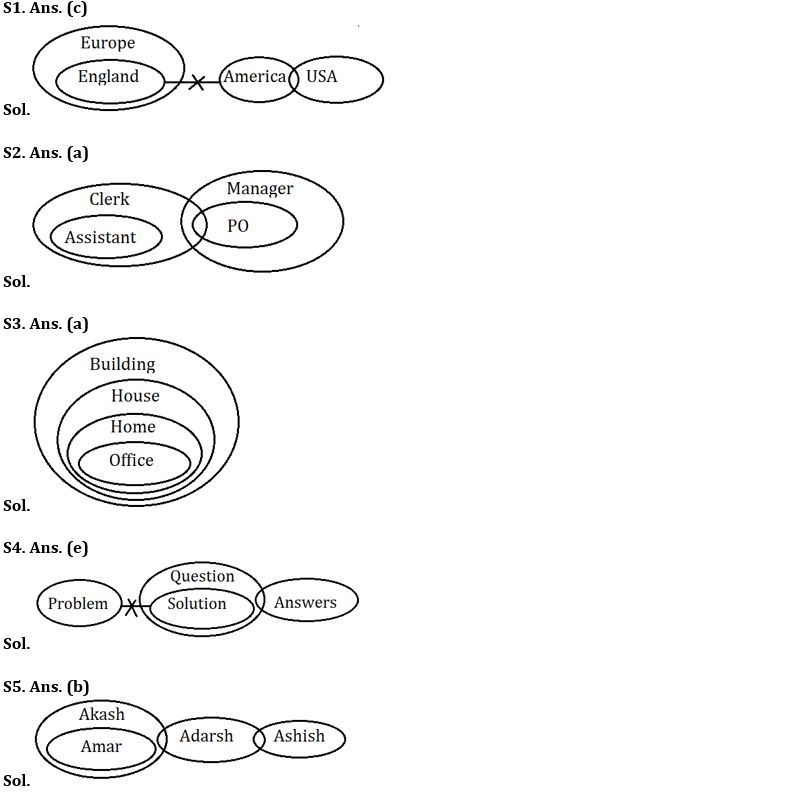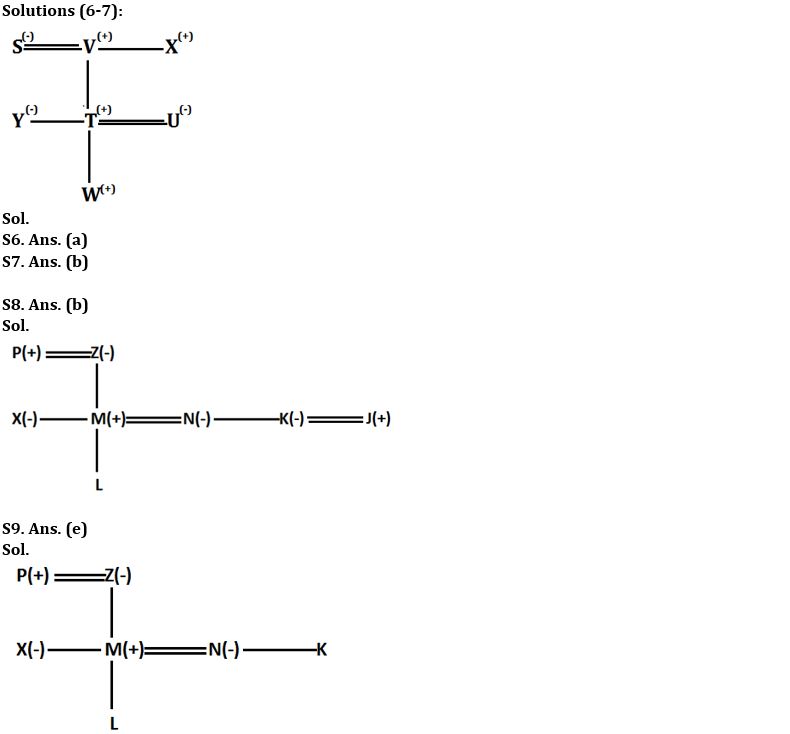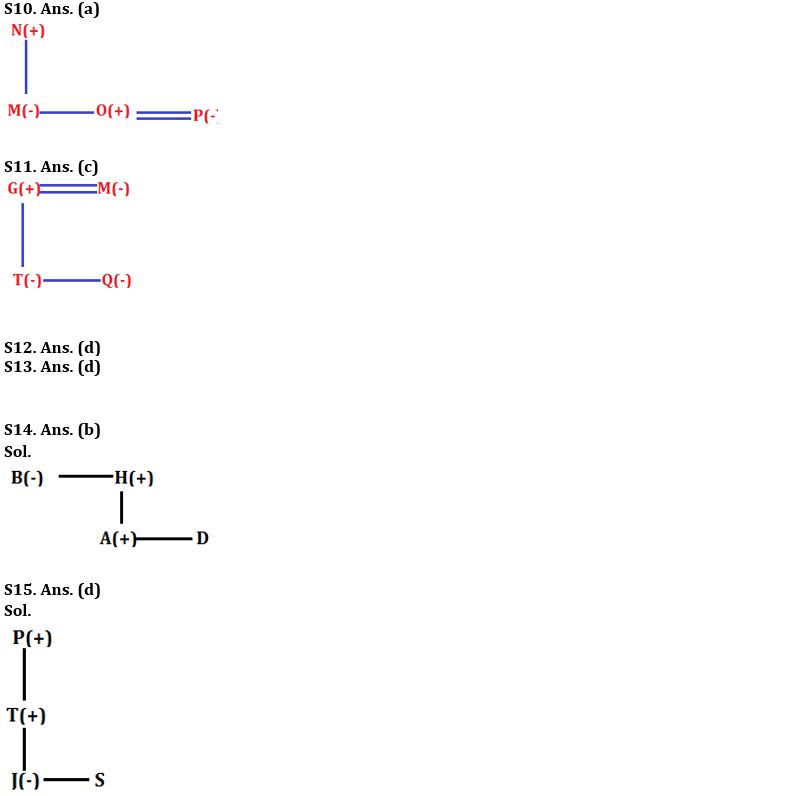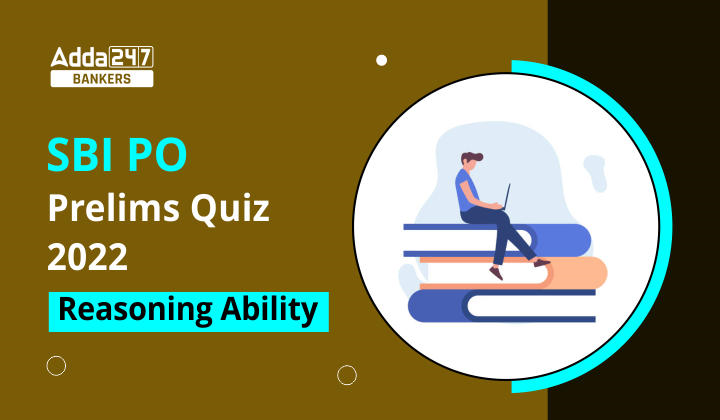Directions (1-5): In each of the questions below some statements are given followed by two conclusions. You have to take the given statements to be true even if they seem to be at variance with commonly known facts. Read all the conclusions and then decide which of the given conclusions logically follows from the given statements disregarding commonly known facts.
(a) If only conclusion I follows.
(b) If only conclusion II follows.
(c) If either conclusion I or II follows.
(d) If neither conclusion I nor II follows.
(e) If both conclusions I and II follow.
Q1. Statements: Some America is USA.
All England is Europe.
No England is America.
Conclusion: I: Some USA is Europe.
II: No USA is Europe.
Q2. Statements: All Assistant is Clerk.
Some Clerk is PO.
All PO is Manager.
Conclusion: I: Some Clerk is Manager.
II: All Clerk is Manager.
Q3. Statements: All Home is House.
All Office is Home.
All House is Building.
Conclusion: I: Some Home is Building.
II: No Home is Building.
Q4. Statements: No Problem is Solution.
All Solution is Question.
Some Question is Answers.
Conclusion: I: Some Solution being Answers is a possibility.
II: No Solution being Answers is a possibility.
Q5. Statements: Only Akash is Amar.
Only a few Akash is Adarsh.
Few Adarsh is Ashish.
Conclusion: I: Some Amar is Ashish.
II: Some Adarsh is Akash.
Direction (6-7): Read the following information carefully and answer the questions given below:
There are seven members S, T, U, V, W, X and Y in a family among them only 3 females. S is married to V. W is grandson of V who has two children. U is sister-in-law of Y who is unmarried. X is brother-in-law of S who is mother-in-law of U.
Q6. How X is related to Y?
(a) Uncle
(b) Brother
(c) Mother
(d) Sister
(e) Grandson
Q7. Who among the following is the father of W?
(a) U
(b) T
(c) X
(d) Y
(e) None of these
Directions (8-9): Study the information carefully and answer the questions given below.
P is father of M who is brother-in-law of K. N is daughter in law of Z who is grandmother of L. P has only two children one son and one daughter. X is sister-in-law of N. P is father-in-law of N. K is unmarried.
Q8. If K is wife of J, then what could be the relation of J with respect to N?
(a) Brother
(b) Brother-in-law
(c) Uncle
(d) Cannot be determined
(e) None of these.
Q9. What is relation of L with respect to X?
(a) Nephew
(b) Niece
(c) Son
(d) Daughter
(e) Cannot be determined
Directions (10-11): Study the following information carefully to answer the given questions
P × Q means P is father of Q
P ÷ Q means P is daughter of Q
P + Q means P is sister of Q
P – Q means P is husband of Q
Q10. In M ÷ N × O – P, How O related to M?
(a)Brother
(b)Son –in-law
(c)Father
(d)Son
(e)None of these
Q11. In G×T+Q÷M, how is M related to G?
(a)Mother
(b)Sister
(c)Wife
(d)Daughter
(e)None of these.
Directions (12-13): Study the information carefully and answer the questions given below.
M, N, O, P, Q and R are six family members. Q is son of P who is not the mother of Q. N is brother of P. R and P are a married couple. O is daughter of R who is sister of M.
Q12. How many female members are there in the family?
(a) Two
(b) Three
(c) Four
(d) Can’t be determined
(e) None of these
Q13. How is Q related to O?
(a) Mother
(b) Father
(c) Sister
(d) Brother
(e) None of these
Directions :(14-15) Study the following information carefully and answer the questions which follow–
‘P – Q’ means ‘P is father of Q’
‘P ÷ Q’ means ‘P is sister of Q’
‘P × Q’ means ‘P is mother of Q’
‘P + Q’ means ‘P is brother of Q’
Q14. Which of the following means ‘A is nephew of B’?
(a) A + C – B × K
(b) B ÷ H – A + D
(c) B ÷ G – A ÷ R
(d) B + T × A ÷ E
(e) None of these
Q15. Which of the following means ‘P is grandfather of J’?
(a) J ÷ W – U – P
(b) P × G + J ÷ A
(c) P – B ÷ J ÷ R
(d) P – T – J ÷ S
(e) None of these
Solutions








 GA Capsule for SBI Clerk Mains 2025, Dow...
GA Capsule for SBI Clerk Mains 2025, Dow...
 The Hindu Review October 2022: Download ...
The Hindu Review October 2022: Download ...
 SBI Clerk Syllabus 2025 and Exam Pattern...
SBI Clerk Syllabus 2025 and Exam Pattern...







